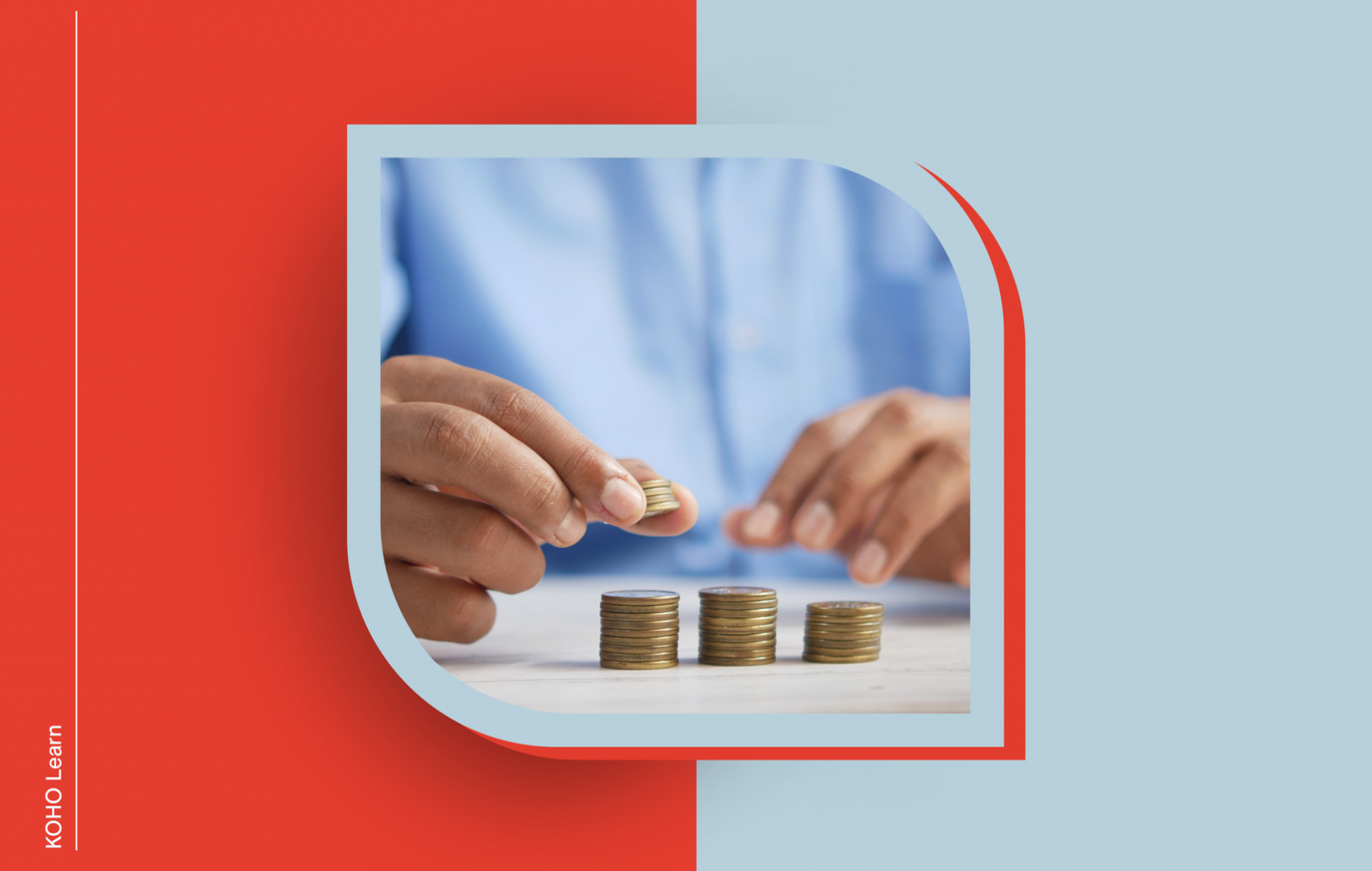
Rounding it up
Overdraft fees are, in essence, very expensive loans; consumers are able to spend slightly more than the money in their account for a fee.
The government does not cap overdraft fees and instead, relies on the banks to remain competitive and cap themselves.
Proper budgeting, shopping around, and linking to other accounts can help you avoid overdraft fees.
There are products, like Cover, that offer a more affordable alternative to overdraft protection.
You’re sitting at the checkout of the grocery store with a full cart of groceries. You’ve got a dinner party later and you’ve decided to splurge a bit on an excellent-looking tenderloin. Sure, it’s a bit more than you planned to spend but, hey, the pandemic is waning and you haven’t seen your friends in months. The cashier rings up your groceries and you head to your car. Unloading at home, you get a notification on your phone that your automated credit card payment came out of your account today as well. Uh oh.
Logging into your banking app you see that you’ve overdrafted and racked up a hefty fee. You’re not alone, dear friend, in the world of overdraft fees. In fact, banks made a record $46 billion in 2020 from overdraft fees alone. That’s a lot of money. Let’s take a look at these fees, if there’s a cap on them, and what else you need to know. Most importantly, we can check out some options that don’t have overdraft fees at all!
What is an overdraft fee?
An overdraft fee is a relatively recent invention. When payments made the switch from slow paper checks to instant cards, banks learned that they were able to automatically cover purchases that may cost slightly more than the customer had in their account. This was, and still is, marketed as “overdraft protection.” In essence, a bank will float you the amount of money needed to complete a transaction for a fee and will continue to charge that fee until you pay back at least the amount you overdrafted.
This seems like a great service, and sometimes it is. Unfortunately, some consumers are not aware that they’ve signed up for the protection or don’t realize that they have overdrafted in the first place, meaning that they rack up lots of fees for purchases as small as a cup of coffee. Some of the shady marketing practices of these services, combined with consumers being uneducated about how they work have led some to argue that these overdraft fees are predatory.
What are they charging?
Banks in Canada are legally permitted to charge overdraft fees and they can be narrowed down to three different structures.
The first is called pay-per-use. Each time you overdraft, the bank will cover the difference and charge you a fee for the service. Generally, the bank will continue to charge you a fee until your account is no longer in the red, usually each day, up to a limit. Say, $200.
The second type is pay-per-month overdraft fees. Here, banks will charge the consumer a monthly fee for enrolling in the overdraft protection program. They can charge this fee in combination with the pay-per-use fee or have a timeframe in which you must make your account whole or face additional fees.
Finally, some banks charge interest as part of their overdraft fee program. The bank will allow you to overdraft and charge you a set interest rate for the service. The interest is often calculated daily on the amount you owe until you return your account to a positive.
In essence, overdraft fees take the form of rather expensive loan products. Let’s say you make a purchase of $101 but only have $100 in your bank account. Your bank will activate your overdraft protection and charge you a $35 fee for the service. In essence, you’ve paid a 12,775% annual percentage rate (APR) on that $1. Virtually any type of loan would be cheaper than that. It does show, however, that APR isn’t always the best measure of a lending product.
Is there a cap on overdraft fees? Who determines it?
The government does not cap overdraft fees at the federal or provincial level or determine what they can be so, legally speaking, banks can charge anything they like. The only laws concerning overdraft programs concern when a consumer can sign up for them. The age of majority, either 18 or 19, depending on the province, is a requirement in all provinces in Canada to sign up for overdraft protection. In this way, banks and the free market determine overdraft fee costs.
Banks arbitrarily get to decide how much to charge customers. However, it’s not in the best interest of banks to gut their own customers with overdraft fees so pricey they’re impossible to get out from under. Most banks cap overdraft fees at a certain number of transactions per day and/or a certain dollar amount. One of the large Canadian banks, for example, will charge up to five fees per day up to $175.
It’s important to note, however, that overdraft fees are a huge profit centre for large banks. They get to charge a pretty penny, often against accounts owned by people who can’t afford to get hit with a $35 fee. It may seem that this is a little bit shady and, well, it is. Almost all banks couch these fees in “customer service” language. In reality, though, banks can and do charge whatever they want for overdraft protection.
The average overdraft fee in Canada is $35 so, when you’re shopping around for a bank, take this into account. Better yet, look for a bank that doesn’t charge overdraft fees at all.
Opening an account with a bank that doesn’t charge overdraft fees at all is the best way to avoid pesky $35 fees that can add up to hundreds of dollars over time. KOHO is an excellent example here; with any KOHO account, you’ll never be charged overdraft fees. In addition, KOHO offers some excellent financial resources that can help you keep the cash flowing.
KOHO also offers a product called Cover, which is a much more affordable alternative to conventional overdraft protection. For just $5 a month, users get access to zero-interest overdraft protection of $50.
Avoiding Overdraft Fees
There are plenty of ways that you can avoid overdraft fees and still ensure that you are able to purchase the things that you need.
Shop around
There are plenty of different types of overdraft programs out there with different fee structures and costs. Some programs charge a monthly fee for additional features. Others just charge you when the overdraft occurs. If you find you’re overdrafting your account a lot, you may want to consider a plan that reduces your overall cost, such as KOHO. You should, however, look into the root cause of why you’re overdrafting in the first place.
Link to another account
Many banks offer the option of linking your chequing account to another type of account at the same institution. For example, you may be able to link your checking account to a credit card or even a home equity line of credit, known as a HELOC. When doing so, the bank will move the overage of the charge you’ve incurred to the other account, keeping you from overdrafting. There may be an additional fee for this service.
SPEND SMARTER. SAVE FASTER
Prepaid
If you aren’t able to keep things square with your account, you may want to consider moving to a prepaid card. There’s usually a fee for using prepaid cards, but it’s relatively minor when compared to overdraft fees. KOHO has a variety of prepaid cards available. These cards offer rewards like cash back on every purchase, low or no monthly fees, and included financial coaching. Best of all, there are no overdraft fees, ever.
Timing
It can be difficult to manage all of the bills you need to pay each month, especially if you have a slightly inconsistent income. Understanding at what time during the month you have to pay your bills can help you plan. Additionally, you can often work with utility, credit card, mortgage, and cable or mobile phone companies to change your bill due dates, making it even easier to plan. Decide what schedule is best for you; some like to spread out payments throughout the month while others like to cluster them around a specific date.
As in all things…
Budgeting will set you free. If you stick to a clear, well-developed budget, you shouldn’t overdraft your account at all. This can be difficult for individuals who live paycheque to paycheque, have fluctuating income, or are lower on the economic scale. The fact remains that if you allocate the money in your account to your expenses efficiently, you should be well-positioned to avoid overdraft fees.

About the author
Dan is a runner and writer living in the Washington, D.C. area, where he currently works for a financial services trade association as the Communications Director.
Read more about this author